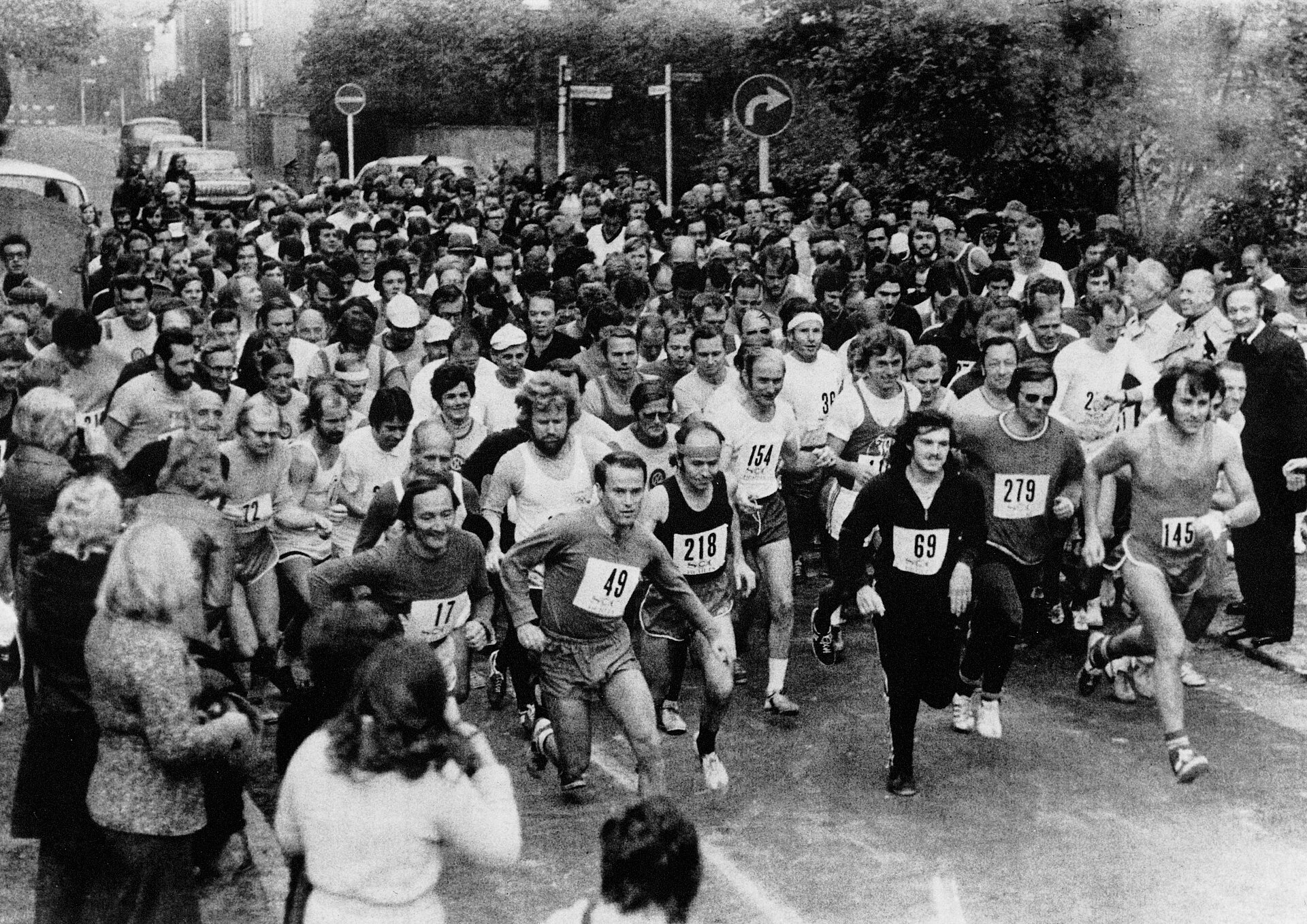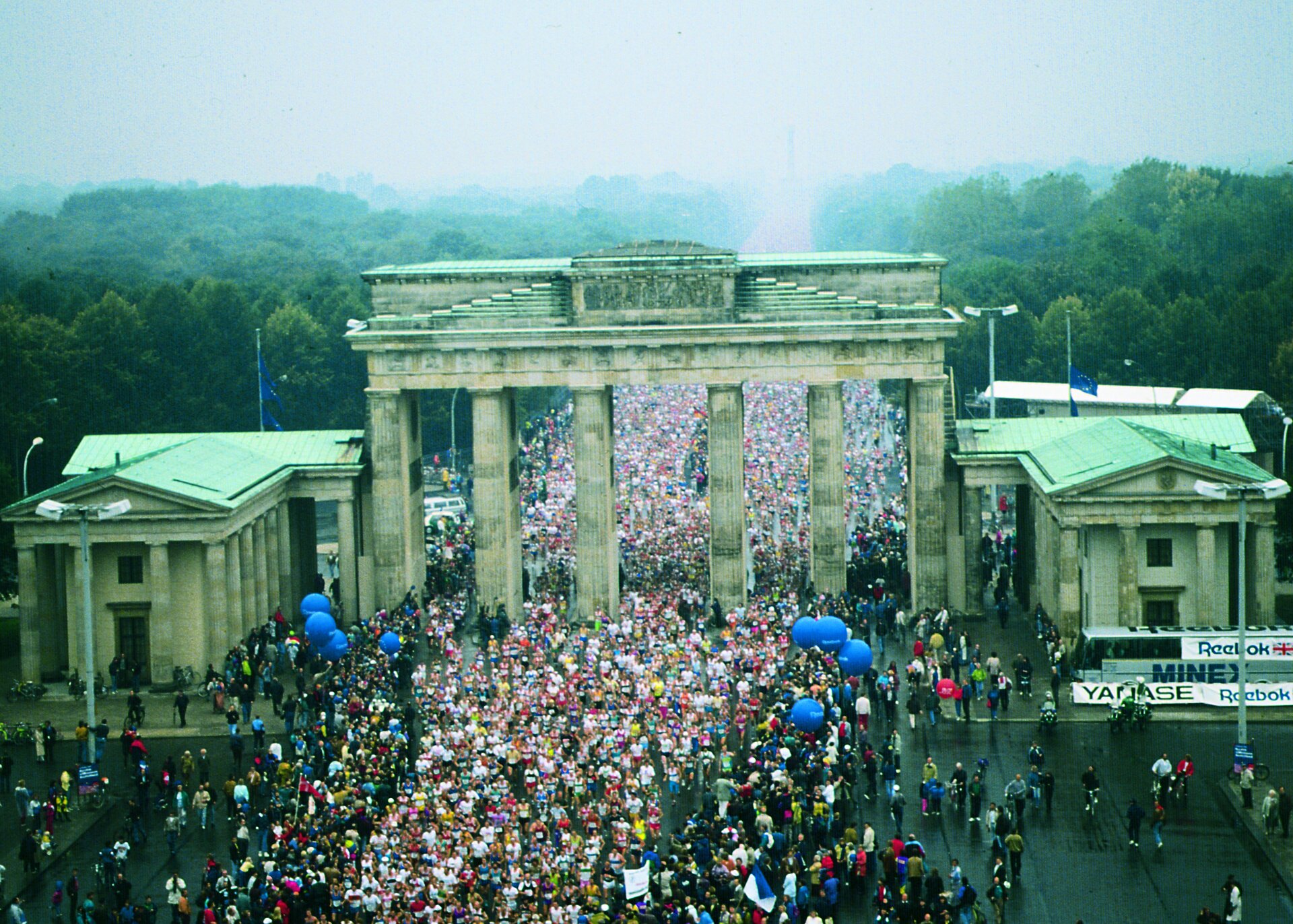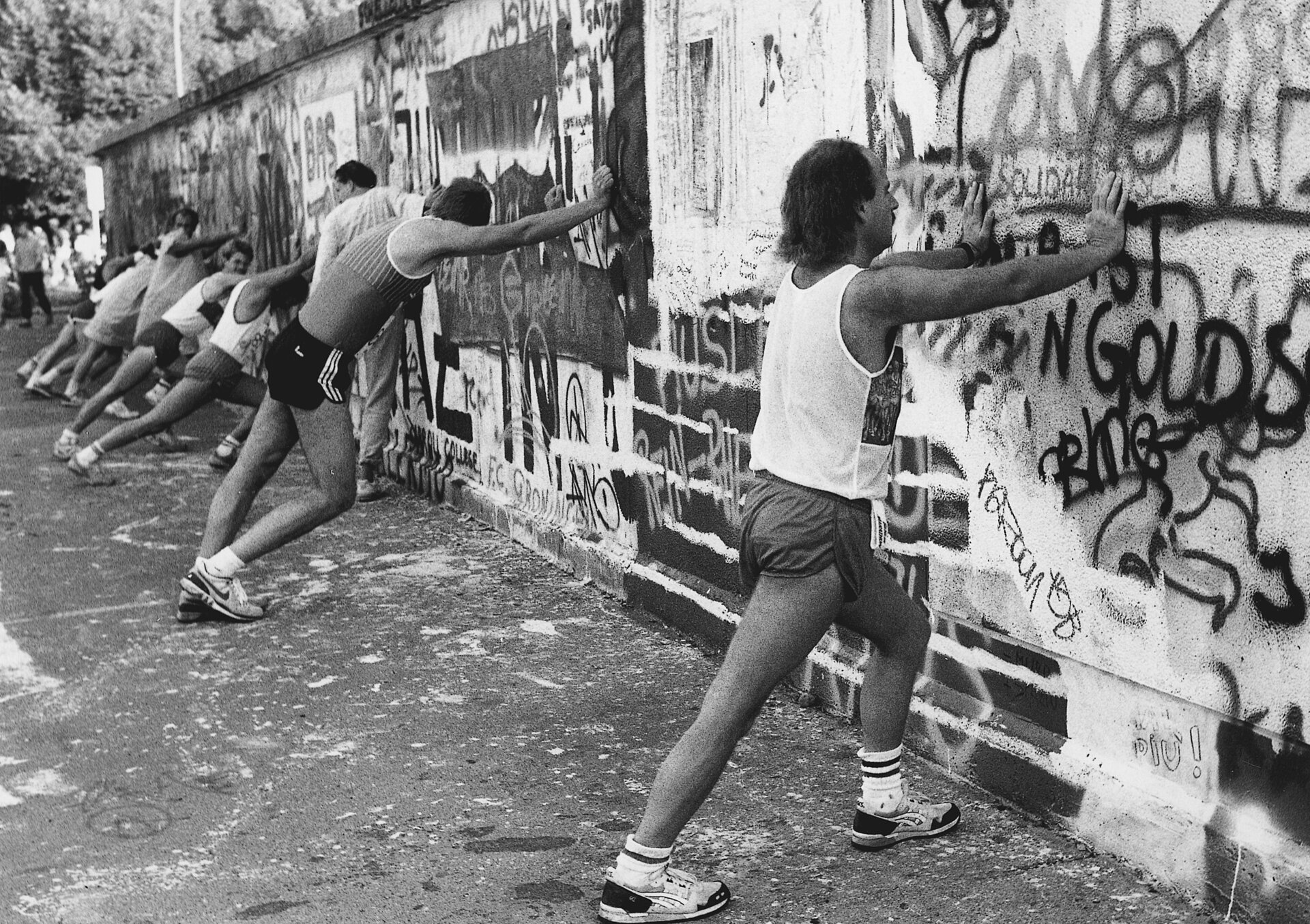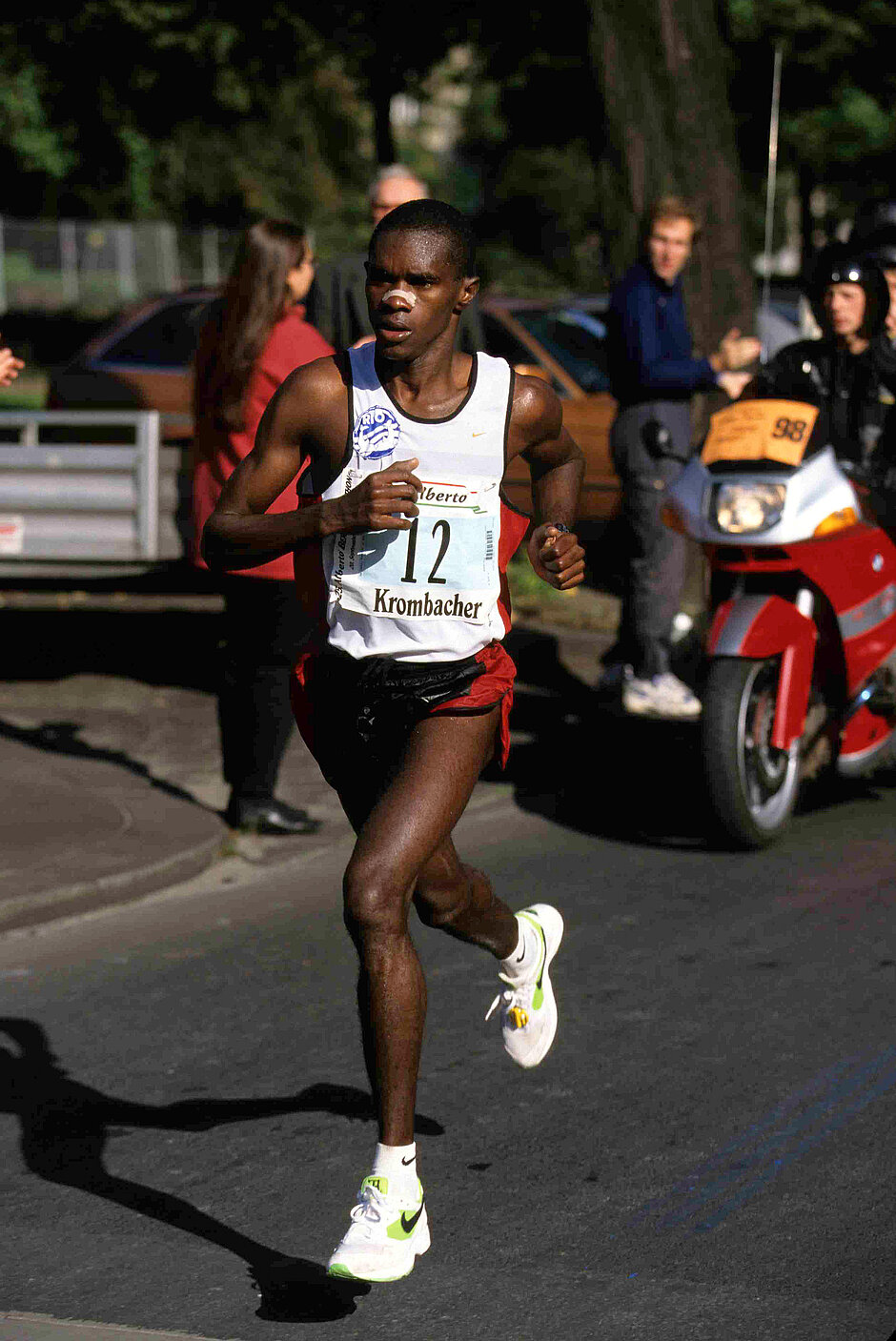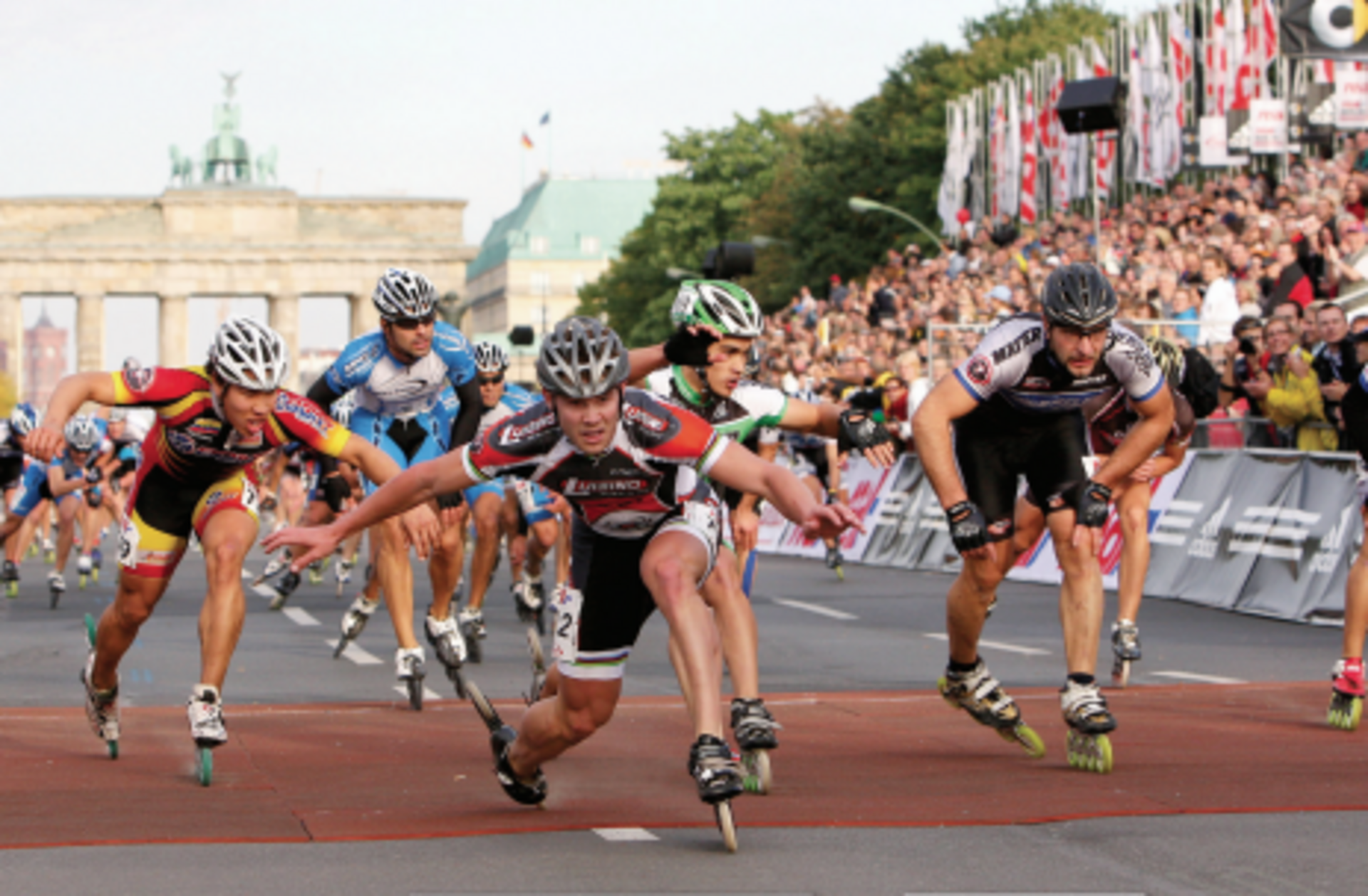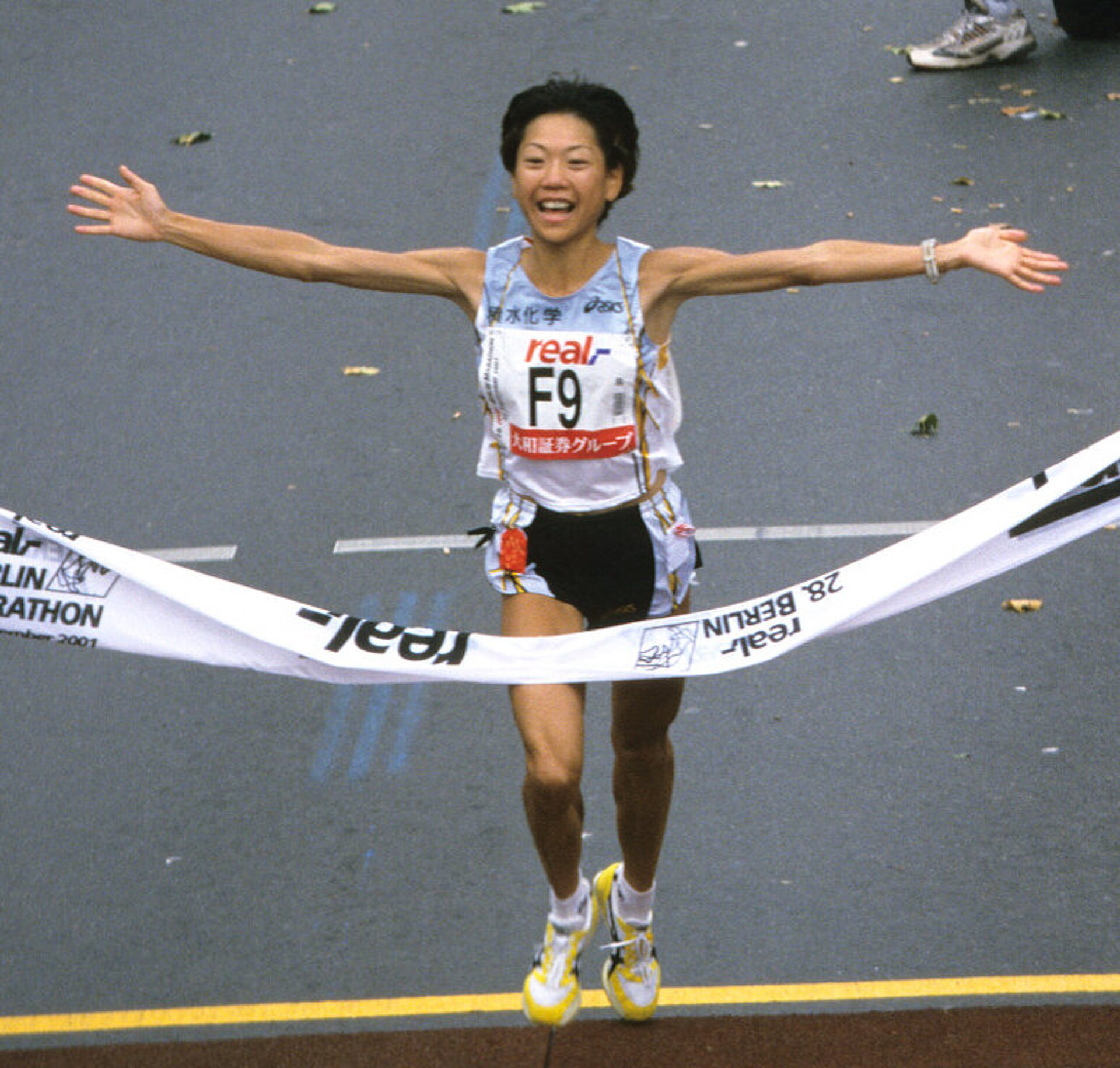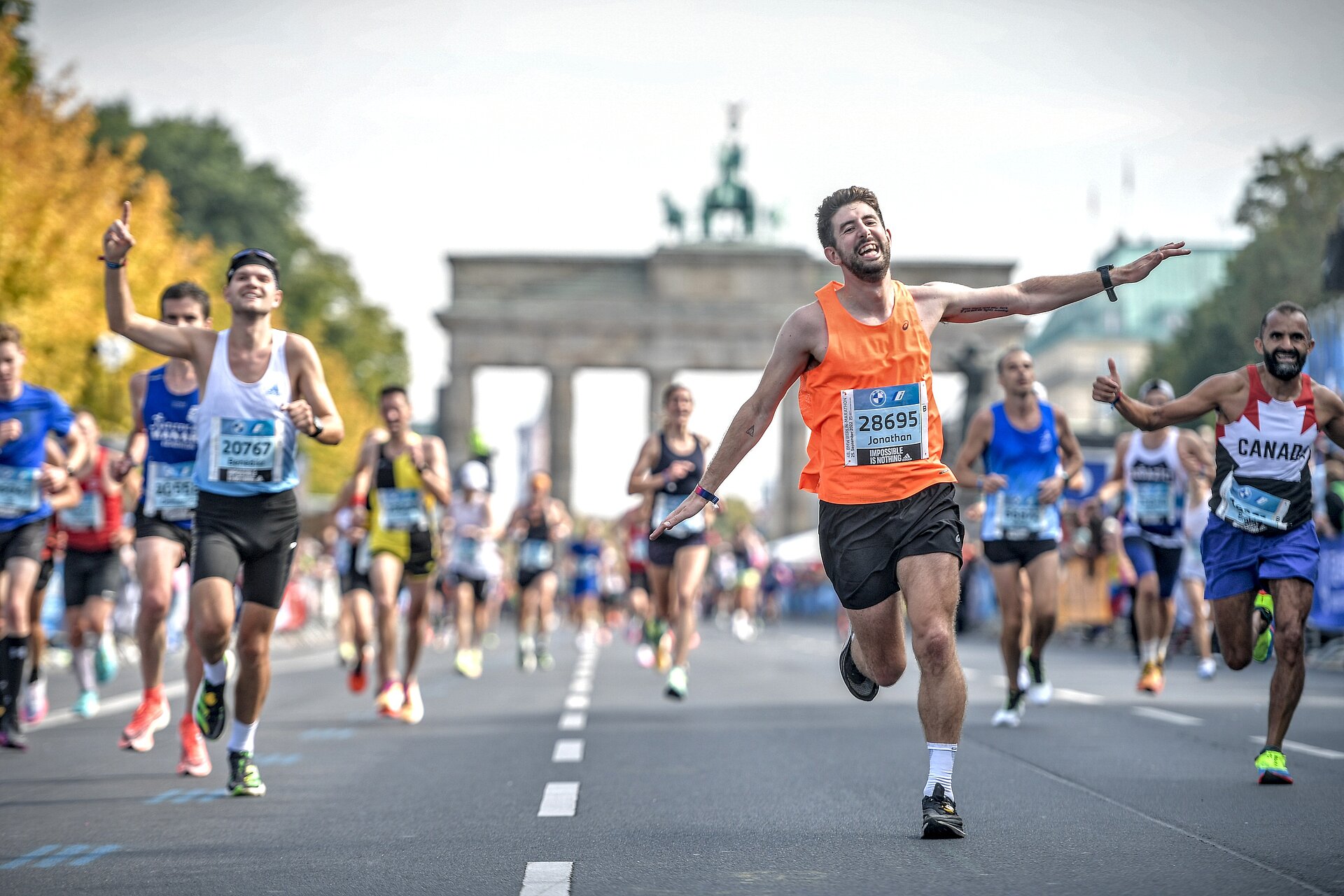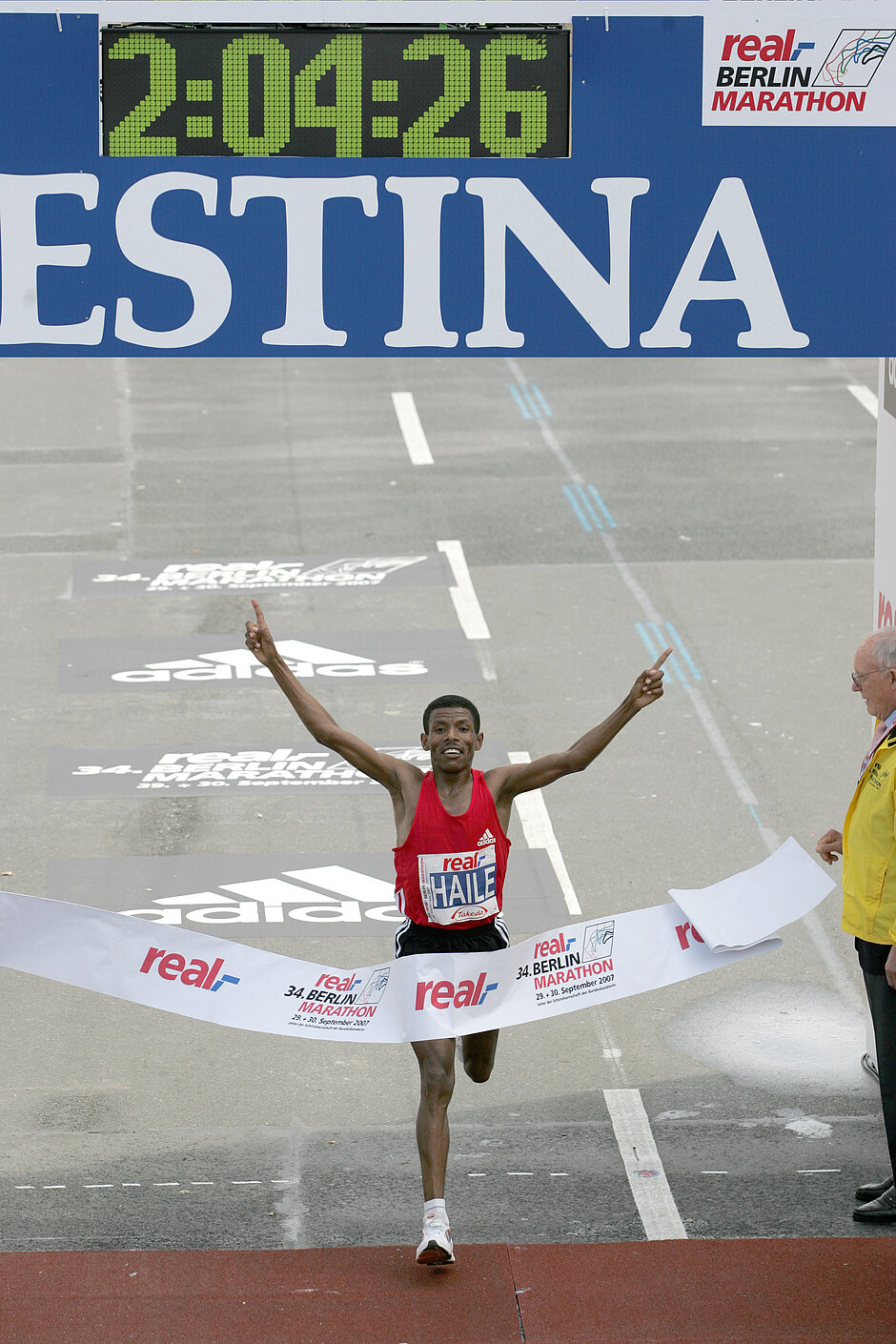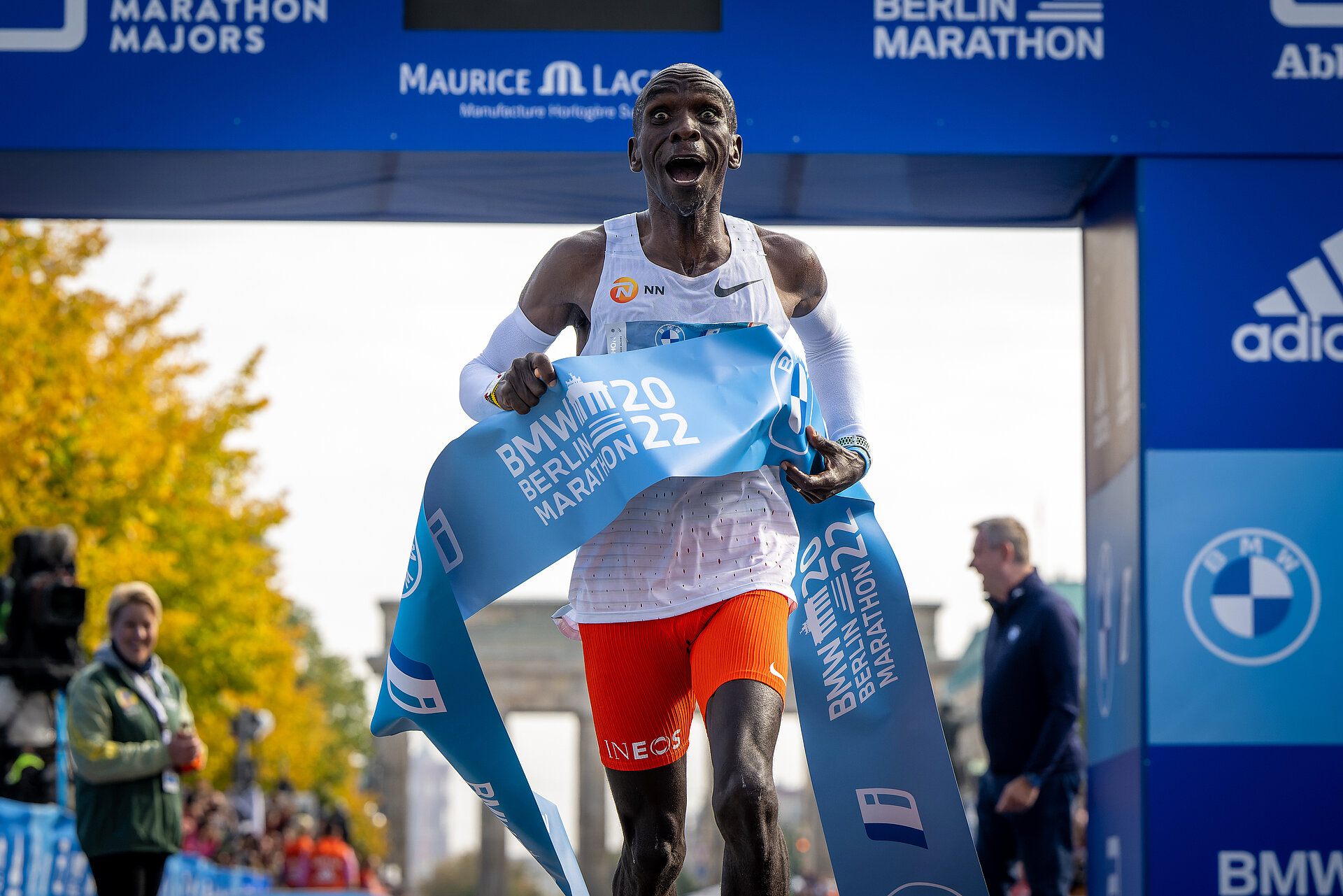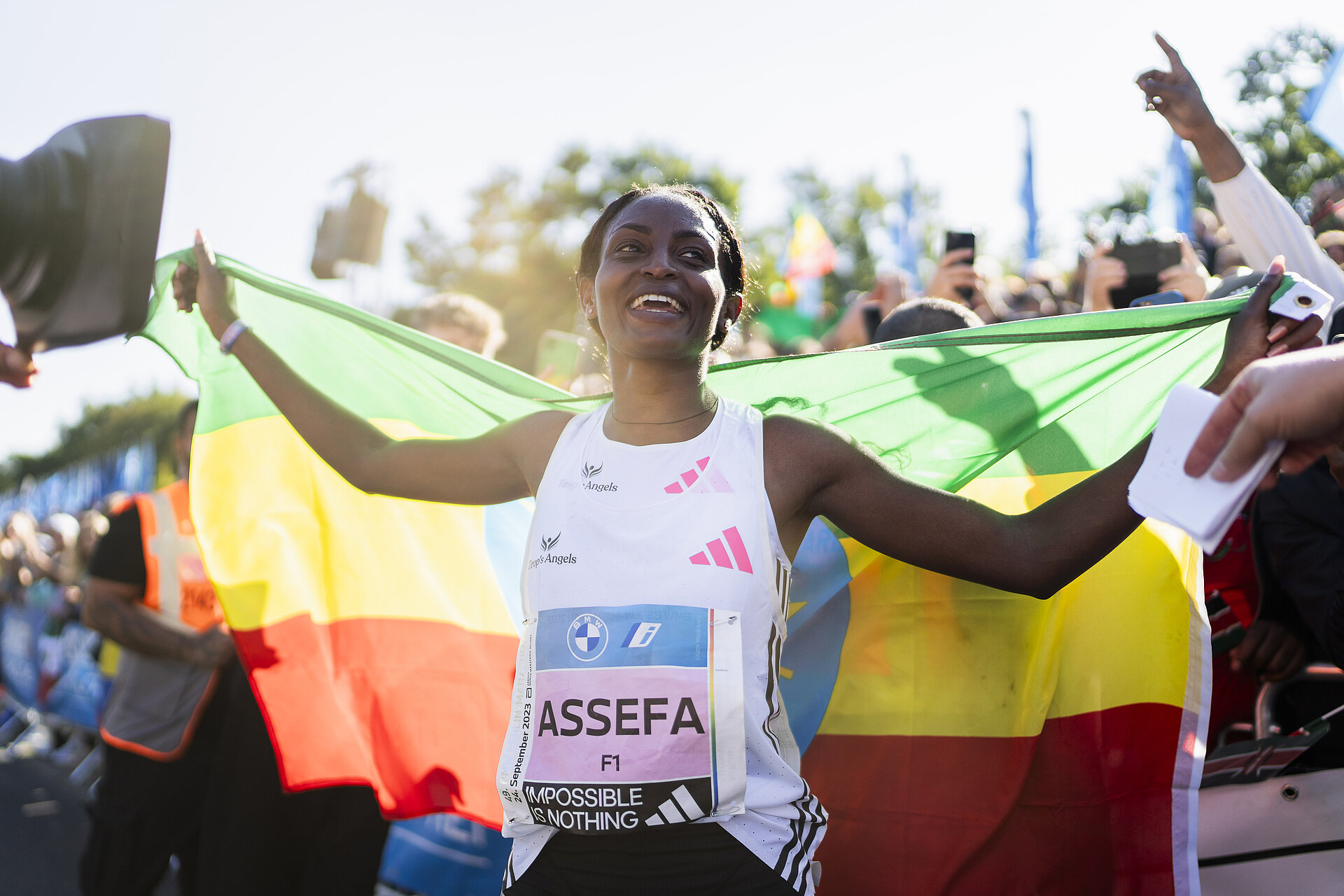The history of the BERLIN-MARATHON
From a popular run in the countryside to a world-class marathon highlight - the BERLIN MARATHON can look back on an eventful history. What began in 1974 with 286 participants has developed over the decades into Berlin's biggest sporting event ever. The race has been marked by numerous records as well as the fall of the Berlin Wall. The BERLIN MARATHON is closely linked to Berlin and German history and has itself written its own fascinating history.
How it began
When the starting gun for the 1st Berlin People's Marathon was fired on 13 October 1974 on Waldschulallee in front of the Mommsen Stadium, none of the 286 participants could have imagined how the BERLIN-MARATHON would develop over the coming decades.
From the second edition onwards, the start and finish were moved into the Mommsenstadion. In 1977, Christa Vahlensieck ran a new world best time of 2:34:47.5 h, which was beaten a year later by Grete Waitz at the New York City Marathon.
The BERLIN-MARATHON, organised by an all-volunteer team, enjoyed increasing popularity in the late 1970s, but retained it‘s image as a fun run in the countryside. Meanwhile, metropolises such as New York and London, with their spectacular city marathons, were showing how things could be done in Berlin.
The leap into the city
"There's a madman over there - he wants to run through the city". This is how the co-initiator and long-time chief organiser Horst Milde was introduced at the decisive meeting with the police president. The "madness" won out and the BERLIN-MARATHON moved from Grunewald to the city centre. On 27 September 1981, the meadow in front of the Reichstag was the starting point for the first 42 kilometres through the city for 3,486 runners from 30 nations. Their finish line was right in the centre of City West at the Kaiser Wilhelm Memorial Church.
The BERLIN-MARATHON grows
In the early 1980s, the BERLIN-MARATHON developed into one of the five biggest marathons in the world. The course ran partly along the Berlin Wall. The top sporting event also attracted a lot of attention in the eastern part of the city. From 1987 to 1989, the start of the BERLIN-MARATHON was moved directly in front of the Brandenburg Gate due to the increasing number of participants. During these years, African runners dominated the race for the first time.
The gate is open!
The first run through the Brandenburg Gate in 1990 was an emotional milestone. A few days before the reunification of Germany, 25,000 enthusiastic athletes from all over the world celebrated by running and causing a worldwide sensation. Former East Berliner Uta Pippig won the women's race with a new course record of 2:28:37.
Samba on the Ku'damm
The Brazilian Ronaldo da Costa caused a big surprise in 1998. Nobody had him on their radar. He ran the race of his life and pulverised the 10-year-old marathon world record in 2:06:50. Shortly after crossing the finish line, he did a cartwheel and danced the samba. A year later, crowd favourite Tegla Loroupe from Kenya did the same in the women's race. She improved the women's world record to 2:20:43. Berlin's course is fast! This message went around the marathon world.
Inline Rock´n´Roll
On 28 September 1997, inline skaters took part in the BERLIN-MARATHON for the first time. The race quickly developed into the world's largest inline marathon. In 2003, 9,612 athletes rolled through the city. Olympic speed skating champion Bart Swings from Belgium became a serial winner in Berlin. He won eight times and set a fantastic course record of 56:45 min in 2022.
Japanese female power
Since 2000, the women's winner has come from Japan six years in a row.
One of these Japanese winners is Naoko Takahashi, who was the first woman to break the 2:20 barrier in 2001 and gave the BERLIN MARATHON its 4th world record. Her run was also broadcast live on Japanese TV and generated record ratings.
Right into the heart
In 2003, the traditional race made another quantum leap. The new circuit with start and finish between the Brandenburg Gate and the Victory Column landed right in the heart of the city. Since then, the unforgettable highlight for every participant has been the finish with the crossing of the Brandenburg Gate, the symbol of German reunification.
A Berlin Legend
From 2006 to 2009, Berliners celebrated their marathon hero Haile Gebrselassie. One of the most successful long-distance runner of all time from Ethiopia choses the Spree metropolis as the venue for his greatest triumphs over the classic distance and became a legend here.
The BERLIN-MARATHON became more and more international and grew to new dimensions. The total number of participants (running, inline skating, wheelchair racing, hand biking) was well over 40,000 and rising.
A news series
Since 2006, the BERLIN-MARATHON has been a member of the AWMM (Abbott World Marathon Majors), the association of the six biggest marathons in the world. It is in the illustrious company of top events in the sporting metropolises of Tokyo, London, Boston, Chicago and New York. The result is a lively exchange of ideas and experiences.
In 2011, the BERLIN-MARATHON was fully booked in a record time of just under three hours. Since then, there has been a lottery to meet the ever-increasing demand for the coveted starting numbers.
The final highlight so far, however, was set by a woman. Tigst Assefa from Ethiopia ran a sensational world record of 2:11.53 at the 49th BMW BERLIN-MARATHON on 24 September 2023, beating the old record by more than two minutes. A total of 13world records were broken at the BERLIN-MARATHON. More than at any other marathon.
Our sponsors













BMW

BMW GERMANY - A STRONG PARTNER FOR RUNNING.
BMW has been the title sponsor of Germany's biggest marathon since 2011. At this running event, the world's elite come together to top the current best times.
Strength. Endurance. Efficiency. These are not only the most important attributes of a runner, but also apply to BMW's sustainable vehicles. BMW has been setting standards in sustainability for years and successfully demonstrates them at the BMW BERLIN MARATHON. But also before the event BMW accompanies the running community in their preparation and emphasizes the joy of running. With the perennial RUN FOR JOY campaign, BMW, supports the athletes in their preparation - together they make the impossible possible. The lead vehicle, the new BMW i5 supports the runners on the course. It has exactly the qualities needed for a successful marathon run: intelligent and responsible use of resources. And it is precisely with these skills that the all-electric vehicle guides the runners safely, purposefully and in an environmentally friendly manner through the capital.
More than 50 vehicles and around 15 scooters of the C evolution class are part of the fleet of support vehicles provided by BMW for the BMW BERLIN-MARATHON. In addition to the iX as a safety car, the latest i-models from the car manufacturer are also in use as shuttle and organization vehicles. With this commitment, BMW supports the sustainable development of modern technology and the sport of running.
adidas

Everything at adidas reflects the spirit of our founder, Adi Dassler. Improving the athlete’s performance was his goal; today, his legacy continues with the consumer at the heart of everything the adidas brand does.
The number of runners in Germany is constantly increasing. No matter where they come from, they all have the same goal: Improve. Better runners, better athletes and in the end a better version of themselves.
adidas Running has something for everyone – we want help each person achieve their individual goals. What counts is personal development, which goes far beyond the personal best.
Abbott

At Abbott, our 114,000 employees in more than 160 countries are devoted to advancing life-changing technologies that help people achieve their full potential. Our medical devices, diagnostic tools and nutrition products are designed to enable individuals to reach their personal best, however they define it. By sponsoring the Abbott World Marathon Majors, a series of the six largest and most renowned marathons in the world, including the BMW BERLIN-MARATHON, we are not just celebrating the pinnacle of physical endurance and determination – we are reinforcing our commitment to improving lives. The Abbott World Marathon Majors are a testament to health and the human spirit at their finest, showcasing that with the right support and determination, every finish line is within reach.
More on Facebook at www.facebook.com/Abbott and on Twitter @AbbottNews and @AbbottGlobal.
Zalando

Are you ready to take your running to the next level? As the official sponsor of the BMW BERLIN-MARATHON, Zalando is here to help you reach your goals. Running a marathon is challenging enough - you need the right equipment to feel completely comfortable. Our functional sportswear can do much more than just look good: From marathon training to relaxed runs - find your perfect outfit at Zalando and run with us!
GENERALI

Generali Germany has been our partner since 2018. The insurance group is part of the international Generali Group and thus also part of a company that is over 190 years old, its history and its heritage. In 2017, the company launched a new sponsorship strategy - “Generali moves Germany”.
The initiative aims to motivate people to lead active health and environmentally conscious lives. Taking part, not watching, is crucial here. In recent years, Generali has thus become one of the largest and most important sponsors in German running. Running promotes physical and mental health and thus has a preventive effect against numerous common diseases. Moreover, hardly any other sport can be practiced in such a resource-saving and environmentally friendly way. Together with the event organizers, Generali develops programs that make major events demonstrably sustainable: in the areas of environmental and climate protection and social commitment.
About 9 million customers are insured with the companies of Generali Germany, which include the brands Generali, CosmosDirekt and Dialog in the life, health and property/casualty segments. Generali's objective is to be a lifetime partner for its customers, offering innovative, individual solutions and services thanks to an excellent sales network in exclusive and direct sales as well as in the broker channel. Generali Germany is part of the "Germany, Austria and Switzerland" (DACH) business unit, which was newly created in 2022.
ERDINGER Alkoholfrei

ERDINGER Alkoholfrei refreshes all finishers behind the finish line. ERDINGER Alkoholfrei is the ideal beverage after sports: isotonic, rich in vitamins, and low in calories. And ERDINGER Alkoholfrei has only 125 kcl per 0.5-liter bottle! Because a varied and balanced diet and a healthy lifestyle are important!
Revolut

Revolut is a digital bank with the mission to radically simplify finances for individuals and businesses. Founded in 2015 in the UK with the goal of making international money transfers faster and cheaper than traditional banks, Revolut today covers all key areas of finance—from everyday banking and saving to investing and international payments. Over 60 million people worldwide, including more than 2 million in Germany, trust Revolut.
https://www.revolut.com/
Shokz

Shokz is the world’s leading consumer electronics brand focused on acoustic innovation and renowned for its groundbreaking developments in wireless open-ear headphones.
Shokz is committed to exploring new possibilities for the open-ear listening experience, embracing the principle of staying connected to your surroundings and nature, and empowering you to enjoy your music while remaining open to the world.
NORQAIN

NORQAIN – Official Timing Partner of the BMW BERLIN-MARATHON
NORQAIN is once again the Official Timing Partner of the BMW BERLIN-MARATHON!
Precision, endurance, and determination are not only essential to the race – they’re also part of our DNA. Together with the pacemakers, we celebrate the global running community and support thousands of runners on their journey to a new personal best, in line with our motto: My life, my way. At the heart of our presence is the Wild ONE collection – our high-performance sports watch designed for those who dare to push their limits.
We look forward to celebrating the marathon spirit with you!
Blackroll

"BLACKROLL® is dedicated to helping people of all ages, sports levels and lifestyles take their health, well-being and performance into their own hands every day. For an optimal balance between tension & relaxation and a pain-free life full of energy, mobility and sustainable performance.
It all started in 2007 with the first fascia roller. Today, the Healthstyle Company offers a whole range of innovative products and solutions that convince experts in sports and health."
Biotherm

With Skin Fitness, Biotherm offers a complete range of premium skincare designed for active women and men seeking effective solutions for a fitter skin: a skin that looks younger, stronger, healthier, in shape for longer. Combining cutting-edge biotechnology, with Biotech Plankton™, and the power of fitness supplements, Biotherm powers up skin cell metabolism. Biotherm: You Work Out, We Work In.
Maurten

You probably know that you burn carbohydrates when you run – both in training and during the race. And how hard it can be getting the fueling right, without GI-distress.
Our Hydrogel Technology makes sure you get enough carbohydrates without risking the session or race. But there are no shortcuts – science has shown that training your guts makes a huge difference.
VILSA

Naturality meets sustainability
As a mineral water, VILSA accompanies you with refreshing purity and light mineralisation. But that's not all! We are committed to people, animals and the environment: as a family-owned, midsized company in its fourth generation, we see it as an obligation and the core of our company philosophy to stand up for nature and the conservation of our resources in order to preserve them for future generations.
Discover our variety of products and enjoy the natural freshness of VILSA.


















